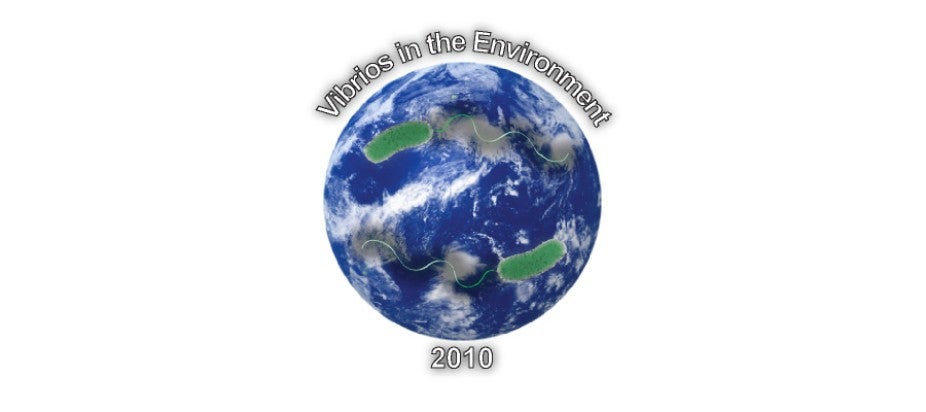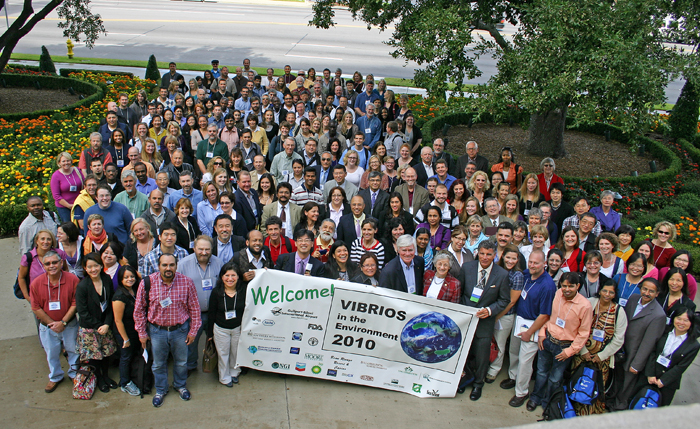Vibrios In The Environment 2010

6:00 – 5:00 pm MST
Conference co-chairs: Rita Colwell and Angelo DePaola
Program Chair: Jim Oliver
Local Arrangements Chair: Jay Grimes

There is unprecedented activity in the U.S. and globally to control the risk of vibrios and yet in most countries illnesses are increasing. In addition to human disease, vibrios play major roles in health and ecology of marine animals, including fish, mollusks, and corals. Furthermore, the vibrios are still regarded by most marine microbiologists as the dominant culturable bacteria in the ocean and there is good reason to believe that global warming may increase their presence.
In 1980, the first conference to convene leading Vibrio researchers met in Louisiana for the “Vibrios in the Environment” conference. In the following 30 years, Vibrio research increased exponentially, bringing these organisms into the forefront of basic scientific discovery and the global public health debate. Vibrios in the Environment 2010 Conference will focus on current research on Vibrio ecology and pathogenesis of humans and marine animals. The conference will also focus on the socioeconomics and public health impacts of Vibrio spp., as well as on current efforts to increase public safety through the development of improved risk assessment tools, early warning systems, improved hygiene, and post harvest treatments of shellfish.
Late Breaking Session Friday November 12, 2010: Vibrios in the Time of Oil
- Keynote speakers: Jay Grimes and Ron Atlas
Background information
In 1980, leading Vibrio researchers working in the area of microbial ecology and public health met in Baton Rouge, Louisiana, to convene a unique conference entitled “Vibrios in the Environment.” The proceedings were published by John Wiley and Sons, Inc. in 1984, and it was firmly established that the Vibrio species, including the human pathogens V. cholerae, V. parahaemolyticus and V. vulnificus, were indigenous to marine and estuarine environments. In the following 30 years, Vibrio research increased exponentially and these organisms have often been at the forefront of basic scientific discovery and the global public health debate. Some prominent issues initiated by Vibrio research include discoveries on the viable but nonculturable state in bacteria, transfer of virulence genes by phages, identification of ballast discharge as vehicle for pandemic spread, and climate change resulting in an expansion of the seasonal and geographical range of Vibrio spp. and their diseases. In addition to advances in Vibrio biology and ecology, major advances have been made in molecular technology (PCR, genomic sequencing, metagenomics and proteomics) and bioinformatics. In the U.S. post harvest practices have been employed to reduce or eliminate the vibrio threat from oysters, and rapid diagnostics (QPCR) have been adapted for monitoring practices and PHP validation. In spite of this increased attention to the vibrios and spectacular technical discoveries over the past three decades, there has not been another major conference focusing on vibrios in the environment or their implications for public health, especially seafood safety. There is unprecedented activity in the U.S. and globally to control the risk of vibrios and yet in most countries illnesses are either flat or increasing. In addition to human disease, vibrios play major roles in marine animal disease, including fish disease and coral disease. Furthermore, the vibrios are still regarded by most marine microbiologists as the dominant culturable bacteria in the ocean and there is good reason to believe that global warming may increase their presence. Science has repeatedly demonstrated that vibrios present public health challenges that were not imagined in 1980. In addition, it is now known that the vibrios are important participants in the carbon and nitrogen cycles, where they participate in chitin degradation (the 2nd most abundant biopolymer in the biosphere), the microbial loop and petroleum degradation. It is known that the vibrios degrade polycyclic aromatic hydrocarbons and they are being looked at as providers of biofuels (chitin degradation). Clearly, the vibrios have important roles in the ocean and they also present huge challenges in public health and opportunities in biotechnology.
After three decades, revisitation of the critical public health and environmental issues and opportunities presented by Vibrios is long overdue. Accordingly, this follow-up conference – Vibrios in the Environment 2010 – will bring together scientists, regulators, public health practitioners, clinicians, seafood providers and students to learn more about Vibrios in the environment.